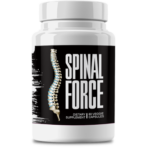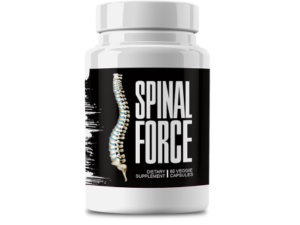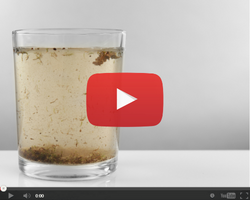This Village-Made Chinese Pain Reliever Eliminates Back And Joint Pain!
Lifestyle Tweaks to Combat TMJ Jaw Pain for a Healthier Life

Getting to Know TMJ Jaw Pain: The Lowdown
Ever wondered why your jaw sometimes feels off or aches when you chew or speak? TMJ jaw pain stems from issues with the temporomandibular joint—the little hinge that connects your jaw to your skull. It might seem confusing at first, but understanding the ins and outs of TMJ discomfort is a great first step toward feeling better and living a healthier life. Here, we’ll break down what TMJ jaw pain really is, talk about its usual suspects and symptoms, and see how everyday habits might be playing a part. Think of it as taking the first step on the road to managing and overcoming those niggling pains.
So, What Exactly Is TMJ Jaw Pain?
In simple terms, TMJ jaw pain is that annoying ache or discomfort in your jaw joint and the muscles around it. Many people describe it as feeling a bit off when they open or close their mouth, sometimes accompanied by clicking or popping sounds—and let’s not even mention the headaches it might bring along! Since this joint connects your jawbone to your skull, any hiccup here can ripple out, affecting more than just your bite. Whether it’s because of misalignment, an injury, or even stress causing your muscles to tense up, this seemingly small joint can cause quite a bit of trouble.
What Sets Off TMJ Jaw Pain and How Does It Show Up?
The one thing about TMJ jaw pain is that its triggers aren’t always cut and dried. It could sneak up on you from habits like chronic teeth grinding, having an off-bite, or even letting stress build up and tense your muscles. For some folks, it pops up every now and then, while for others it’s a constant companion—think persistent stiffness, swelling, or that unsettling grating sensation in the joint. It’s crucial to tune in to your body and spot these signals early on; understanding the root of the problem is key to managing it in a way that works for you.
How Your Daily Life Can Make or Break TMJ Comfort
Believe it or not, everyday choices like what you eat, how you handle stress, or even your desk setup can either fan the flames of TMJ pain or help cool it down. You might be surprised to learn that something as simple as adjusting your posture or tweaking your diet can ease the strain on that jaw joint. When you look at your health as a whole, even small—and sometimes unexpected—lifestyle changes can make a big difference in lowering the discomfort. It’s all about finding that balance and creating a routine that works in harmony with your body.
Tweaking Your Diet to Soothe TMJ Jaw Pain
Loading Up on Anti-Inflammatory Foods
Your diet plays a huge role in keeping inflammation at bay, and that goes for TMJ jaw pain, too. Eating a rainbow of leafy greens, berries, omega-3 rich fish, and nuts can really help reduce inflammation and give your body the building blocks it needs to repair tissues. Not only do these vibrant, balanced meals make your plate look more appealing, but they also work behind the scenes to lessen that nagging discomfort. In a way, feeling better might just start in your kitchen—with every thoughtful bite.
Steering Clear of Trouble-Making Foods and Habits
On the flip side, certain foods and habits can aggravate your TMJ pain by stirring up inflammation. Highly processed foods, too much sugar, and even an overindulgence in caffeine might set off flare-ups or tighten your jaw muscles. And don’t even get us started on hard, crunchy snacks—your jaw isn’t built for that kind of workout. Even things like constant gum chewing or biting on pens can stress out your jaw. A few mindful swaps in your eating habits can be a game changer, helping you manage pain holistically and keep your day-to-day life smoother.
Why Staying Hydrated Matters
Never underestimate the power of staying well-hydrated! Drinking enough water throughout the day can keep your muscles and soft tissues around the jaw joint nice and elastic. This not only cuts down on inflammation but also ensures your muscles are in a better state overall. Plus, good hydration boosts circulation, which is key to delivering nutrients that help your body repair itself. So next time you reach for a glass of water, remember—it might just be doing wonders for your TMJ.
Exercise and Posture: Your Allies Against TMJ Pain
Simple Stretching for Daily Relief
Adding a few stretches to your daily routine can do wonders for your TMJ pain. Simple exercises targeting the neck, shoulders, and jaw can help ease tension and boost joint mobility. Think gentle jaw stretches or slowly opening and closing your mouth to improve blood flow around your jaw. These little breaks, whether at your desk or home, can make a big difference. Just a few minutes each day can not only reduce that persistent ache but also help you feel more balanced overall.
Strengthening Your Posture and Muscles
Beyond stretching, paying attention to your posture and muscle strength is a smart move when dealing with TMJ pain. Strengthening the muscles around your neck and shoulders can improve your overall alignment, taking some pressure off your jaw. Simple tweaks—like sitting up a bit straighter, aligning your head with your spine, or creating a more ergonomic workspace—can have a surprisingly positive impact. It’s all about regular, mindful movements that help your body hold up better against everyday stress.
Finding Calm: Stress Management for TMJ Relief
Relaxation Techniques to Ease Your Jaw
Stress and TMJ jaw pain often go hand in hand. When you’re stressed, your jaw muscles tend to tighten, fueling that uncomfortable pain. That’s where relaxation techniques come in like a breath of fresh air. Whether it’s deep breathing, progressive muscle relaxation, or a bit of gentle yoga, setting aside a few minutes a day can help melt away some of that tension. By carving out these pockets of calm, you can help keep your jaw from protesting so loudly.
Mindfulness and Meditation: The Ultimate Stress-Busting Combo
If you haven’t tried mindfulness or meditation yet, now’s a great time to jump in. A regular practice can shift your focus away from the pain and help you approach it with a little more patience and self-compassion. Even just fifteen minutes a day might steer you towards a calmer mindset and a less tense body overall. Many folks swear by these techniques—not just for easing the stresses of daily life, but also for keeping that stubborn TMJ pain in check.
Understanding Stress’s Role in TMJ Pain
Here’s the deal: stress isn’t just in your head—it has tangible effects on your body. When you’re stressed, your body churns out cortisol, which can lead to more muscle stiffness and inflammation in the jaw. Recognizing this connection is a key part of managing TMJ pain. By integrating stress reduction strategies into your routine, you’re not only taking charge of your mental well-being but also lightening the load on your jaw. It’s a win-win approach to both body and mind.
Sleep Smarter to Ease TMJ Pain
Finding the Right Sleep Position
Your sleeping position might be playing a bigger role in your TMJ pain than you think. Adjusting how you sleep can lessen the strain on your jaw and neck muscles. For instance, sleeping on your side with a supportive pillow generally beats lying on your stomach, which can twist your neck and add to the pain. Keeping your head and neck aligned throughout the night is a simple but effective way to help your jaw feel better in the morning.
Creating the Perfect Sleep Sanctuary
Beyond the right position, crafting a sleep-friendly environment is key to recuperation. A cool, dark, and quiet bedroom can set the stage for deep, restorative sleep that helps your muscles repair and stress melt away. Investing in soft, hypoallergenic bedding and a supportive mattress is like giving your body a little extra care. Small adjustments to your sleep environment can lead to major improvements in how you feel, with fewer disruptions from pain.
Ergonomic Tweaks for Everyday TMJ Relief
Honing Your Workspace to Beat TMJ Pain
Let’s face it: many of us spend far too long sitting at a desk, which can easily contribute to TMJ discomfort. Making a few simple changes to your workspace can go a long way. For example, raising your computer monitor to eye level, choosing a chair that supports your back, and taking regular mini-breaks to stretch can help reduce muscle tension overall. Even little tweaks like using speakerphone during long calls or rearranging your desk setup can ease the strain on your jaw. It’s all about creating a work environment that supports your health.
Home Comforts for a Pain-Reduced Life
Your home should be your haven—even when it comes to battling TMJ pain. Think about carving out a cozy corner for stretching or meditation, and opt for ergonomic furniture whether you’re reading, working, or watching TV. Simple habits, like scheduled “tech breaks” for a little movement and rest, can make a big difference in keeping your jaw muscles relaxed. Small, thoughtful changes around the house can add up, leading to less pain and a more balanced lifestyle.
Move More, Sit Less: The Benefits of Regular Movement
Sitting still for hours can really tighten up your muscles, including those around your jaw. Introducing brief moments of movement into your day—whether it’s a quick walk around the block, a few stretches at your desk, or a little extra activity between tasks—can help significantly reduce stiffness. Regular movement not only boosts circulation but also helps support overall joint and muscle health. Remember, even short spurts of activity can add up to big improvements in managing your TMJ pain.
Expert Therapies and Alternative Routes for TMJ Relief
Professional Therapies: Physical Therapy and Massage
When home remedies and lifestyle tweaks aren’t cutting it, professional help might be the next step. Physical therapy and specialized massage techniques can zero in on the underlying issues causing your TMJ pain. A trained therapist will tailor exercises and massages specifically for you, gradually improving joint mobility and relieving muscle tension. It’s a collaborative process—combining expert advice with tried-and-tested methods—to gradually restore a more balanced, pain-free state.
When It’s Time to Call in a Professional
Sometimes, the signs are clear enough that it’s time to seek professional help. If your TMJ pain sticks around despite your best efforts at self-care or starts interfering with your daily routine, it might be wise to consult with a dentist, physical therapist, or even a specialist in alternative treatments. Reaching out for professional advice isn’t a setback—it’s a proactive move to better understand your condition and find a customized solution that works for you. Early intervention can often ward off future complications and keep you feeling your best.
Exploring Alternative Treatments for TMJ Relief
In addition to conventional treatments, more and more people are finding relief through alternative therapies. Acupuncture, chiropractic care, and biofeedback techniques are just a few of the methods being explored. These approaches aim to balance your body’s natural energy and cut down on overall stress levels, both of which can help ease jaw pain. While results might differ from person to person, mixing different treatments under professional guidance can often provide a more rounded path to relief.
In a nutshell, managing TMJ jaw pain often requires a multi-pronged strategy. By tweaking your diet, exercise routine, sleep habits, and work environment—and by integrating stress management techniques—you’re building the foundation for a healthier, less painful life. Remember, progress isn’t always instant; it’s about making consistent, small adjustments that add up over time. With the right mix of self-care and professional support, every little change can steer you closer to a pain-free, happier life.








